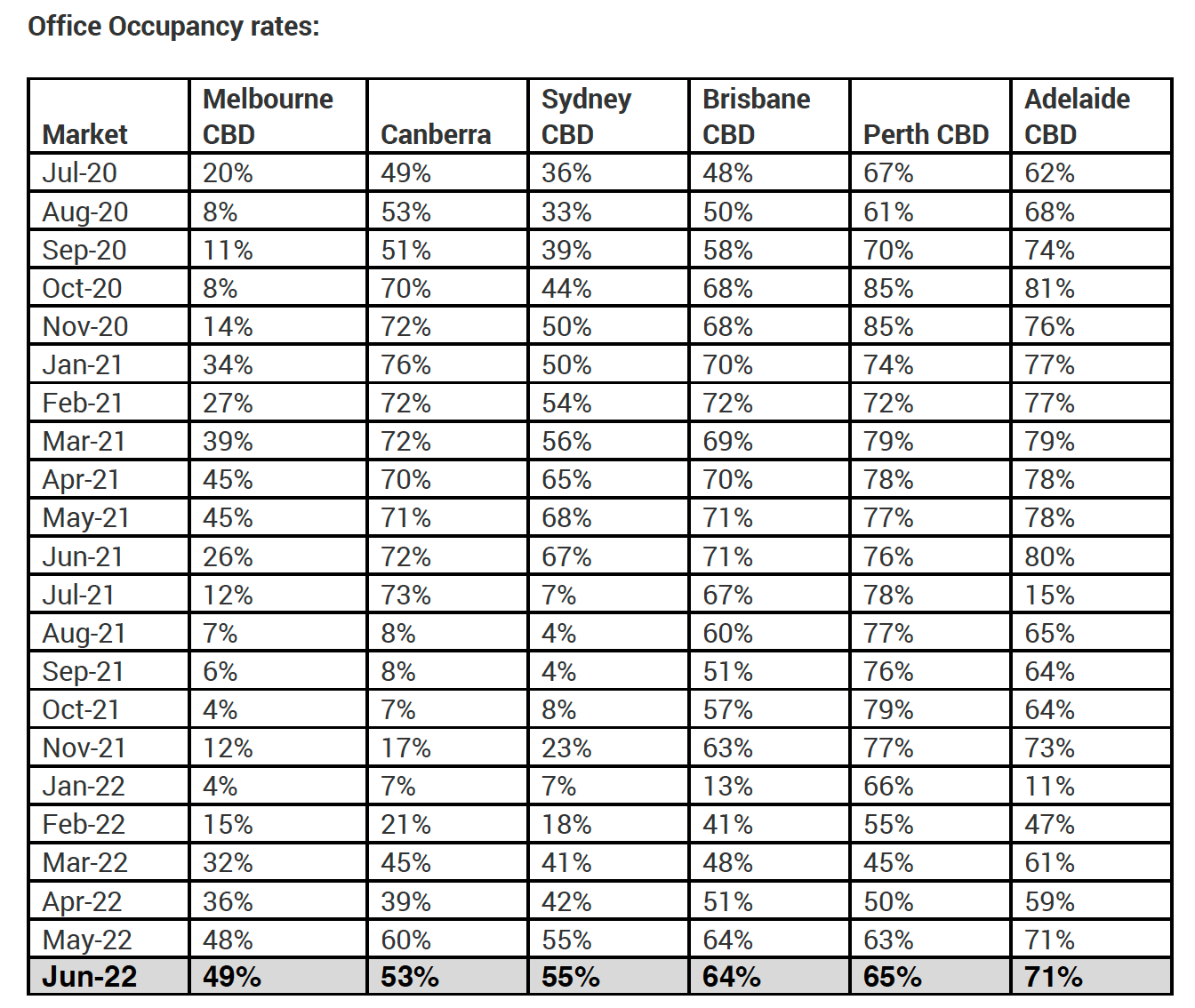The spread of COVID-19 and the flu has kept workers from returning to the office in June, according to new data from the Property Council of Australia (PCA).
The PCA’s latest Office Occupancy survey found that while office occupancy rates rose between May and June in Perth (63 to 65 per cent) and Melbourne (48 to 49 per cent), levels declined in the ACT and rates in other major cities remained steady.
“Although office occupancy rates have steadily recovered since the beginning of the year, this month there was a clear pause in workers heading to the office,” PCA chief executive Ken Morrison said.
“The continued spread of COVID-19 and other illnesses, extremely wet weather on the east coast, combined with industrial action in NSW have all clearly hampered workers being able to get into their CBD workplaces.
“Before the Delta strain hit in the middle of last year we saw a real resurgence in the return to office and we would expect occupancy to lift again once the current unfavourable impacts subside.”
The chief executive noted that he didn’t believe the figures were a reflection of workers not wanting to head back to the office, rather they demonstrated that workers were forced to stay home “whether it be to care for sick kids, rest themselves or to avoid dangerous weather”.

The survey, conducted between 23-30 June, coincided with a spike in COVID-19 case numbers and a wave of the flu sweeping the nation.
In the year to 6 July, Australia recorded 187,431 influenza cases. Likewise, COVID-19 case numbers spiked in June after falling across Australia since mid-April. While significantly lower than January’s peak when Australia was recording a seven-day average of more than 100,000 cases per day, the current wave of COVID-19 is picking up pace and resulting in approximately 39,000 daily cases on a seven-day average.
Though occupancy levels in Adelaide were stable, the South Australian capital continues to have the highest level of workers in the office in the nation at a rate of 71 per cent. This is followed by Perth (65 per cent) and Brisbane (stable at 64 per cent). Sydney’s occupancy rates remained steady at 55 per cent, with a teacher strike and train strikes occurring during the survey period.
Sydney and Melbourne recorded peak occupancy levels at 66 per cent and 60 per cent respectively, with low days at 38 per cent and 31 per cent.
“These results are somewhat disappointing given recent gains, but they’re also not surprising given the events we’ve faced,” Morrison said.
“Winter was always likely to be a difficult time for the pandemic, but we do expect to see office occupancy grow towards a higher ‘new normal.”
Get our daily business news
Sign up to our free email news updates.

)
)
)
)
)
)

